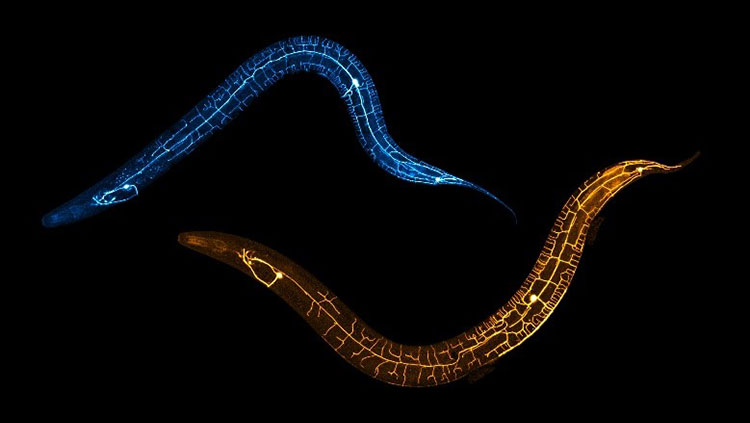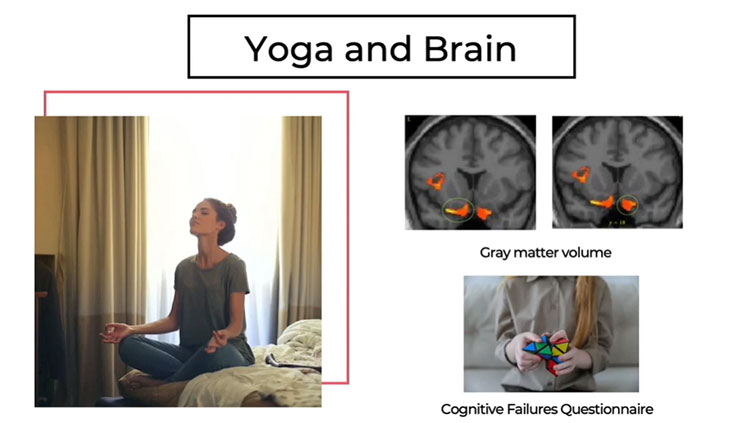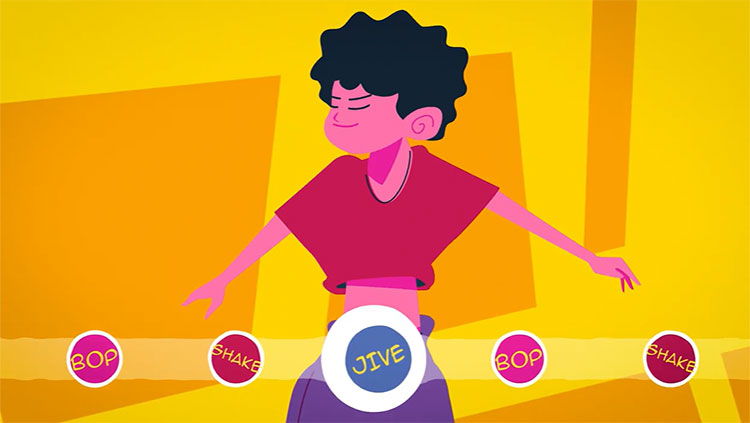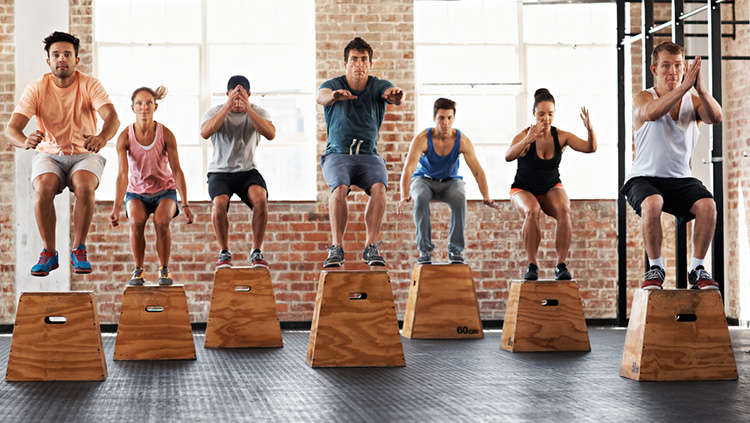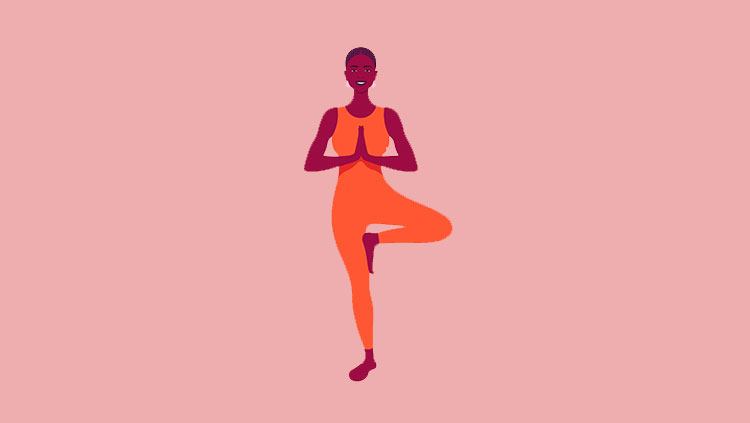Yips and Twisties: What Makes Athletes Suddenly Lose Control of Their Bodies?
- Published18 Sep 2023
- Author RJ Mackenzie
- Source BrainFacts/SfN
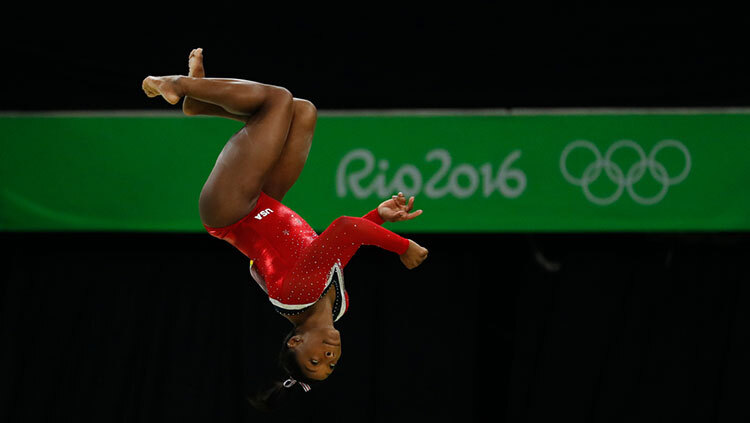
Simone Biles, the most successful American gymnast in history, recently added another title to her collection by winning her eighth national title at the 2023 U.S. National Gymnastics Championships. What made Biles’ historic U.S. victory more impressive was that it came after a two-year break from the sport, during which she battled with a movement problem called the “twisties.”
Gymnasts struck by the twisties can lose their sense of body position mid-jump, causing them to spin too many or too few times and putting their safety at risk. Gymnasts are not the only athletes affected. In baseball and golf, the “yips” — where batters’ reliable swings desert them or golfers’ hands jerk when putting — are common and can ruin careers. These struggles often stem from psychological stress, but new research says some cases may originate deep in the brain.
Trailing the Golf “Yips”
Charles Adler, a professor of neurology at the Mayo Clinic, has spent decades researching yips. He is interested in yips that disrupt one of the highest-pressure movements in sport — the golf putt. Adler divides these yips into two groups. While most cases have a psychological basis, Adler says there is “a clear-cut number of individuals, probably a small percentage, who appear to have a neurological disorder, either a tremor or dystonia.” Tremor and dystonia are closely related. People with tremor rhythmically and uncontrollably move their body parts, while dystonia causes muscle spasms and contractions.
Psychological and neurological golf yips both ruin putts but may require different treatments. Separating the two conditions has proved challenging, Adler says. “The big issue is that people with a neurological issue often get worse when anxious or stressed,” he explains. As a result, Adler’s team must carefully record patients’ movements to find a means of marking out these two types of yips.
In a 2018 study, Adler and his team recorded 27 golfers’ putts with motion detectors and cameras. They noted movements that looked like focal dystonia, resembling a jerk or a twist while putting limited to one body part — the golfers’ arms. They then separated the golfers into those that showed dystonic movements and those who did not. The golfers were hooked up to electromyography (EMG) equipment, which measures the electrical activity produced by muscles in response to signals from the brain.
The team analyzed EMG signals from dystonic and non-dystonic golfers. Adler’s team noticed that in some golfers, wrist extensors and flexors — muscles in the forearm responsible for guiding the putter — sent a synchronized wave of activity through the EMG equipment called a co-contraction. This wave pattern was significantly more common in the dystonic group.

The electrical signals that Adler used to pin these yips down don’t begin in the forearm but in the brain. When we swing a baseball bat, many brain areas are involved. Signals from the eye pass to the visual cortex. Increased activation in the fusiform gyrus — responsible for object recognition — is linked to better performance. There’s also input from the cerebellum, which helps fine-tune movements. These movement signals are processed in the basal ganglia, clusters of neurons found deep in the brain, to make sure they happen in predictable patterns, before being directed to the motor cortex, the brain’s movement control center. The impulses travel via the spinal cord to our muscles, which action the swing. Adler says errors in basal ganglia processing are likely the source of dystonic yips.
Renovating Confidence and Movements
Jamie Shapiro, professor of sport and performance psychology at the University of Denver, has helped many gymnasts with the twisties. Athletic body control involves movements that are patterned into our brain, says Shapiro, a former gymnast herself. “I know the movement pattern for a cartwheel; I could still do it. I could also imagine it, and when I imagine it, I can feel it.”
External factors like stress may disrupt these patterns by activating the fight-or-flight response or by causing the athlete to dissociate from their bodies. Currently, researchers can only guess how the gymnast’s brain and body function in the midst of the twisties; tracking muscle movements or brain activity during a backflip is too difficult for available technology.
In a 2021 paper exploring the yips, researchers used electroencephalography (EEG) to record electrical currents from the brain’s surface. It found that people with the yips had increased brainwave activity in their motor cortices when performing precise movements. The authors suggested the athletes may be focusing too much on their body parts — a higher-order cognitive task more easily disrupted by psychological stress.
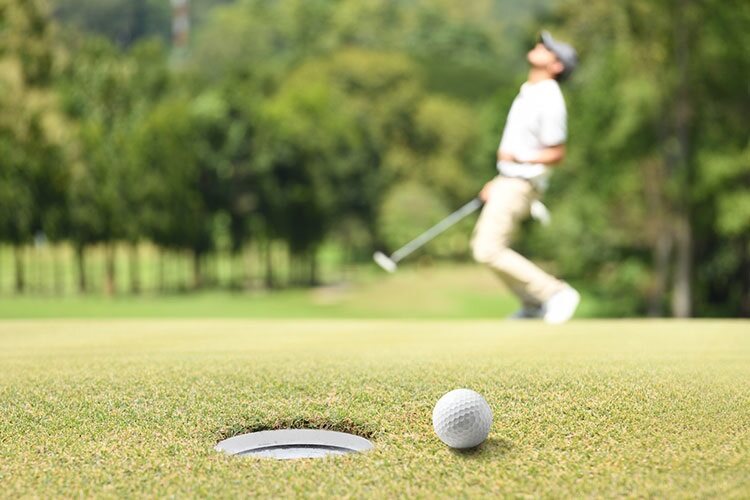
Athletes affected by both types of yips want the same thing — a solution. “I wish I had a magic wand,” says Shapiro. She reassures athletes that have the twisties and other related conditions that their experiences are real and common. Their struggles don’t make them an outlier.
To beat the twisties, gymnasts often must rebuild movements from scratch, she says. If the twisties stop a gymnast from completing a dismount that includes a somersault and twist, Shapiro might have them start with a simpler movement — flipping into a foam pit — before adding in more complicated body movements with a higher level of risk. With this kind of rehab, “it's more likely that athletes do get those skills back eventually, rather than it completely ending careers,” adds Shapiro.
Physical therapy and small technique changes, like switching grip, can also help many cases of the yips, says Adler. In cases where the yips’ influence can’t be broken, Adler says dystonia should be considered. While detailed studies and treatments for the yips and twisties are at an early stage, Adler hopes greater awareness can help people realize that these conditions aren’t all in the mind.
CONTENT PROVIDED BY
BrainFacts/SfN
References
Adler, C. H., Temkit, M., Crews, D., Mcdaniel, T., Tucker, J., Hentz, J. G., Marquardt, C., Abraham, D., & Caviness, J. N. (2018). The yips: Methods to identify golfers with a dystonic etiology/golfer’s cramp. Medicine & Science in Sports & Exercise, 50(11), 2226. https://doi.org/10.1249/MSS.0000000000001687
Bregman, S. (2023). Simone Biles captures historic eighth title at the U.S. Gymnastics Championships. International Olympic Committee. https://olympics.com/en/news/simone-biles-captures-historic-eighth-title-us-gymnastics-championships-results
Dhungana, S., & Jankovic, J. (2013). Yips and other movement disorders in golfers. Movement Disorders: Official Journal of the Movement Disorder Society, 28(5), 576–581. https://doi.org/10.1002/mds.25442
Mills, K. R. (2005). The basics of electromyography. Journal of Neurology, Neurosurgery & Psychiatry, 76(suppl 2), ii32–ii35. https://doi.org/10.1136/jnnp.2005.069211
Mink, J. W. (2003). The basal ganglia and involuntary movements: impaired inhibition of competing motor patterns. Archives of Neurology, 60(10), 1365–1368. https://doi.org/10.1001/archneur.60.10.1365
Muraskin, J., Sherwin, J., & Sajda, P. (2015). Knowing when not to swing: EEG evidence that enhanced perception-action coupling underlies baseball batter expertise. NeuroImage, 123, 1–10. https://doi.org/10.1016/j.neuroimage.2015.08.028
Shaikh, A. G., Beylergil, S. B., Scorr, L., Kilic-Berkmen, G., Freeman, A., Klein, C., Junker, J., Loens, S., Brüggemann, N., Münchau, A., Bäumer, T., Vidailhet, M., Roze, E., Bonnet, C., Jankovic, J., Jimenez-Shahed, J., Patel, N., Marsh, L., Comella, C., … Jinnah, H. A. (2021). Dystonia and tremor: A cross-sectional study of the dystonia coalition cohort. Neurology, 96(4), e563–e574. https://doi.org/10.1212/WNL.0000000000011049
Watanabe, T., Yoshioka, K., Matsushita, K., & Ishihara, S. (2021). Modulation of sensorimotor cortical oscillations in athletes with yips. Scientific Reports, 11, 10376. https://doi.org/10.1038/s41598-021-89947-1
Yu, G., Chang, K.-F., & Shih, I.-T. (2022). An exploration of the antecedents and mechanisms causing athletes’ stress and twisties symptom. Heliyon, 8(10), e11040. https://doi.org/10.1016/j.heliyon.2022.e11040
Also In Movement
Trending
Popular articles on BrainFacts.org




